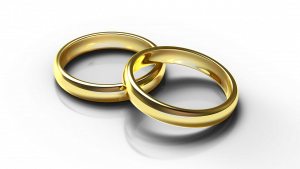In a world that is progressively embracing diverse expressions of gender and sexuality, questions surrounding identity and relationships are becoming more intricate. Consider the following: If a man is dating a woman, what is the man’s sexuality? This question may trigger various assumptions in your mind. But let’s dive deeper into the dynamic interplay of identity, relationships, and societal norms, and challenge our conventional understanding.
The Spectrum of Identity
At first glance, it may seem obvious to assume that a man dating a woman is straight. However, as our understanding of gender and sexuality evolves, it’s essential to recognize that an individual’s sexuality cannot be neatly categorized based solely on their partner’s gender. Progressive views acknowledge that a man dating a woman could identify as bisexual, pansexual, or queer (bi+), encompassing a broader spectrum of attraction and orientation. This perspective challenges the traditional binary notions of straight and gay, and encourages us to appreciate the complexity of human identity.
Marriage and Identity
But what happens when we shift the context to marriage? Does the act of marrying someone influence how we perceive their sexuality? Despite society’s increasing acceptance of diverse relationships, marriage is often associated with a certain permanence that can overshadow an individual’s true identity. If a bisexual man marries a woman, does that automatically make him straight? Can a pansexual woman’s marriage to another woman define her as a lesbian? The answer, unequivocally, is no.
The Fallacy of Assumptions
As social beings, we tend to rely on assumptions that have been ingrained in our interactions and cultural norms. These assumptions are guided by a binary way of thinking about gender and sexuality, reinforced by a concept known as heteronormativity, which privileges and normalizes heterosexuality. This dichotomy fails to accommodate the expanding definitions of gender and sexuality, complicating our understanding of identity within the institution of marriage.
Navigating Bisexual Erasure
Coauthored with Meagan Pendleton, our recent publication “Doing Sexuality: How Married Bisexual, Queer, and Pansexual People Navigate Passing and Erasure,” delves into the experiences of bi+ individuals within marriages. By analyzing in-depth interviews with 23 bi+ married individuals, our study sheds light on the challenges faced by those who openly identify as bi+. The commitment of marriage sometimes reinforces binary perceptions of sexuality, leading to the erasure of bi+ identities. Morgan, a bisexual woman married to a man, explained:
I’ve gotten a lot of really awful questions that are like “Oh, so you’re married to Emanuel, so does that mean you’re straight?” I’ve gotten that so many times… I think that with the misconceptions about bi people not being able to make up their mind and all that, I think that when one of us ‘makes up our mind’ [laughs], or it seems like we’re making up our mind by getting married, right? I think the misconception that we’re now straight or we’re now gay depending on who you’re married to, it definitely is a little bit stronger because of marriage and commitment.
This erasure, perpetuated by misconceptions, marginalizes bi+ individuals and has detrimental effects on their mental well-being.
Marriage as a Privilege and a Challenge
Interestingly, our study also uncovers another facet of this complex narrative: the privilege of passing as straight. Many bi+ individuals in man/woman marriages shared how this arrangement grants them the choice of when to disclose their identity. Some saw this as a privilege, while others used it as a defense mechanism to protect themselves and their families from potential stigmatization. Nathan, a bisexual man married to a woman, explained:
I will tell you I am more out at work than I am where I live. Not because I personally have issues with it, but I have two high school aged boys that still have to get through a football locker room, and kids can be mean. So, I’m a little bit more protective of my orientation as it were … at least until such time as my boys graduate from high school, and then it’s all ok. Then at that point, it’s like, then I don’t care. But I’m being sensitive to how they might be treated by their friends if their friends knew. So, like I said, I’m more out here.
This dual experience of privilege and concealment highlights the intricate ways in which societal expectations and personal choices intertwine.
Challenging Perceptions and Doing Sexuality
Our study’s findings lead us to ponder the nature of sexuality as an achieved status, influenced by societal interactions and institutions like marriage. Just as West and Zimmerman’s concept of “doing gender” suggests, sexuality is intricately woven into how others perceive us, regardless of how we identify ourselves. To truly challenge the normative boundaries of marriage and the binary understanding of sexuality, bi+ individuals need visibility. This calls for outward expressions of queerness within marriages, thereby increasing awareness and understanding of diverse relationships.
Conclusion
As we strive for a more inclusive society, we must recognize the complexity of human identity and the challenges faced by bi+ individuals within the context of marriage. The intertwining of societal expectations, personal choices, and fluid identity necessitates a shift in how we perceive and interact with each other. By embracing the diverse tapestry of human experience, we move towards a future where the full spectrum of gender and sexuality can be celebrated, understood, and respected.
Daniel J. Bartholomay (he/him) (@Dr_Bartholomay) is an assistant professor of sociology and co-coordinator of women’s, gender, and sexuality studies at Texas A&M University – Corpus Christi. His research examines inequalities, health disparities, and family dynamics within the LGBT+ community. He has a book under contract with Rowman & Littlefield titled The Future of Marriage: The Changing Landscape of Gender, Sexuality, and Family. You can learn more about Daniel’s work here.


Comments